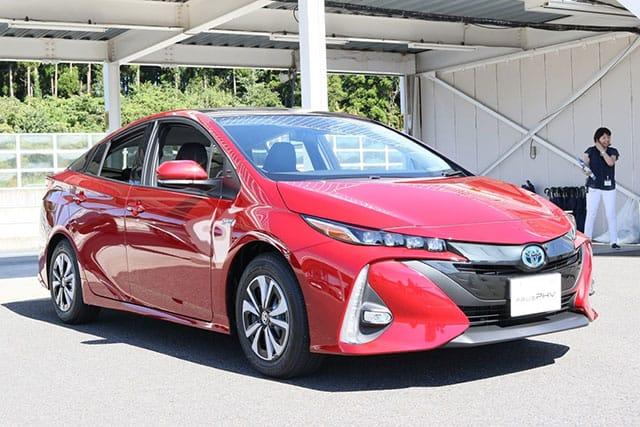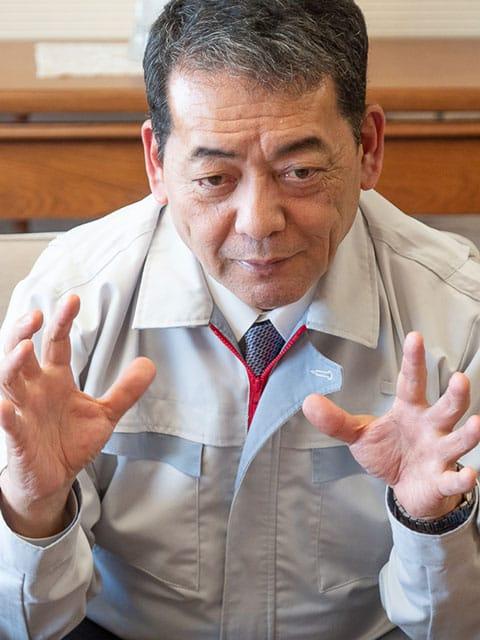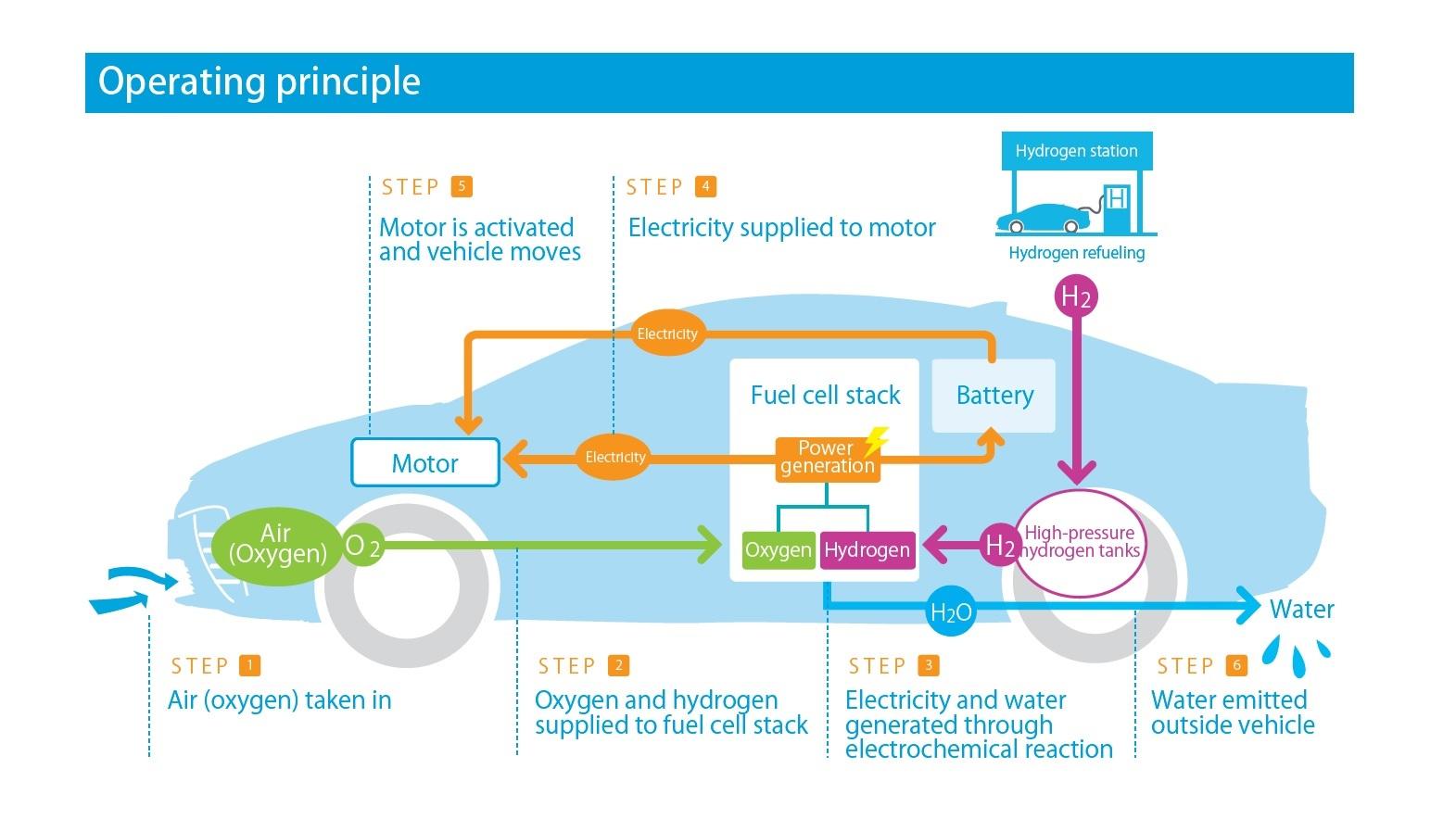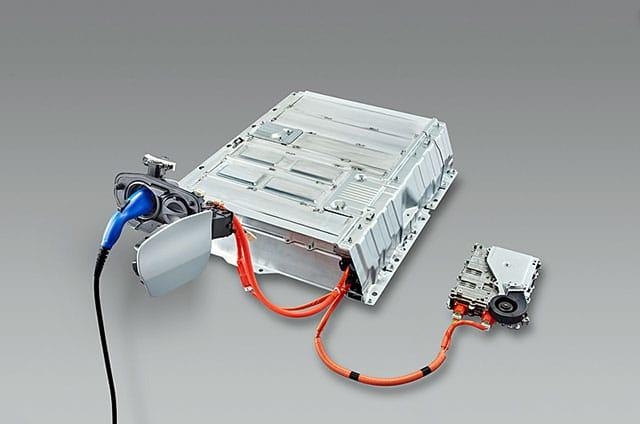
Toyota goes to the moon: What is Toyota's strategy for electrification? -
Interview between Naoto Ikeda (Motor Journalist) and Shigeki Terashi (Part Three)

An interview with Executive Vice President Terashi by motor journalist Naoto Ikeda was published on March 16th and 17th on “THE PAGE”, a news site operated by Yahoo’s subsidiary Wordleaf Corporation that highlights noteworthy trends and social problems in the world and explains them clearly. Based on the length of the content, TOYOTA TIMES serialized the content of this interview over five episodes with the cooperation of “THE PAGE” and Mr. Ikeda.
Toyota will embark on a project exploring the moon. Borrowing from the words of President Akio Toyoda, Executive Vice President Shigeki Terashi has stated that the challenge is to combine “the virtual with reality” and bring the technology on earth to the moon. In this, the third episode of a five-part series, motor journalist Naoto Ikeda and Executive Vice President Shigeki Terashi discuss how Toyota is often criticized for being lead-footed when it comes to battery electric vehicles (BEVs), and how the top management of Toyota’s Technical Center thinks about and plans its future strategy to meet the global trend of vehicle electrification.

Considering the fact HEVs (Hybrid Electric Vehicles) can contribute positively to the environment for 10 years after their purchase, Toyota believes they are the ideal vehicle for an end user. However, as time goes on, the number of PHEVs (Plug-in Hybrid Electric Vehicles), BEVs (Battery Electric Vehicles) and FCEVs (Fuel Cell Electric Vehicles) will continue to increase.
The interesting thing about Toyota is that they maintain the position that “the market will always be the decider,” even when they, as a maker, predict that the mainstream will be shifting from HEV to PHEV. This is why Toyota will always provide a diversified line of electrified vehicles to enable the market to choose freely. This in turn means they are able to provide for more niche markets as well.
However, Toyota is sharing their wide range of technologies, such as those related to BEV and FCEV, which are soon to be the mainstream in the industry, with other companies. They will even supply technical support for the installation process, if using one of their pre-packaged systems. So it seemed appropriate to ask them why.
Toyota currently has about 11-12 percent of the world's automotive market share.

- Ikeda
-
If you consider the variety of energy sources throughout the world, a global maker like Toyota needs to be ready to supply for any scenario; isn’t that right? That being the case, don’t you have to do something like make a “full line-up of electrified vehicles?”
- Terashi
-
Yes. Our president recently said that we are a full-line manufacturer of electrified vehicles. However, I’ve been wondering if we may need to slightly rethink this approach. Something similar happened with HEVs as well. We must shift from “by ourselves” to “with others.”
I think our ideas up to now for creating allies and working together have left much to be desired.
For example, we've been making cars and asking customers to buy them for some time, and yet we only have 11-12 percent of the world’s market share. - Ikeda
-
Nevertheless, over 10 percent of the global share is quite an amazing number.
- Terashi
-
Not really. However, when it comes to disseminating our technology to save the global environment, it's of no use unless everyone works together. So, for example, Toyota, Mazda, and Denso created a company called EV C.A. Spirit to develop basic BEV technologies. Currently it has nine active member companies. The idea is to develop basic BEV technologies together as a team, and then use those technologies to build BEVs individually. I think this approach could be applied to FCEVs as well.
- Ikeda
-
This may be a naïve question, but aren’t BEVs and FCEVs both incredibly important technologies in the competitive arena? How can you make these technologies open sourced?
- Terashi
-
For the past 17 years Toyota has been ranked No.1 in emission reductions. Other companies are barely making the levels required by regulations. To put it bluntly, what this tells us is that even if a company adds BEVs as a part of its existing lineup, it doesn't necessarily mean they can achieve good emission reduction rates.
- Ikeda
-
Well, Toyota has a reputation for lagging behind when it comes to BEVs.
- Terashi
-
Even if seen as the latest technology, what we (Toyota) really mean is “please feel free to utilize our technology that's currently available on the market.” We are already working on technologies for the next generation and the one after that. That’s why even if Toyota releases the “latest” technology, we won’t be losing our competitive edge. All we need to do is to work hard on the next product and the one after that. In a way we are pushing ourselves by doing this, but reflecting on our experience with HEVs in particular, we regret that we were unable to get more people to adopt our technology early on.
FCEVs account for less than 1 percent of our share. Toyota is not a big enough company to disseminate this technology singlehandedly.

-
We have released many patents related to the FCEV to the public as well. We had a lot of back and forth, but, if you ask me if a lot of makers were interested, there weren’t. This is why, as I mentioned earlier, not only do we build cars, but if another company comes and asks us for our systems, saying “Let us have your system (parts or technology), and we will use it,” we will be more than happy to supply parts like the Toyota FC stack (the heart of the power generation) and the high pressure hydrogen tank, as well as provide technical assistance when needed. Naturally, this will entail some form of compensation.
Currently FCEVs comprise less than 1 percent of the overall share of vehicles. It is doubtful that Toyota working alone will have enough of an impact to increase the popularity of FCEVs. Although we are a full line manufacturer of electrified vehicles, if we can collaborate with others, we can function as both a conventional carmaker and a system supplier.
Apart from that, as you know, there are many engineering companies that provide various types of technical support. It is not as if we need to provide technical support forever. Let’s say we work with an engineering company on a system adaptation for some other manufacturer, afterwards that company will be able to take on their own system adaptation without any support from Toyota. Our circle of friends will grow as we share our technologies and products. In the past, even if you said you wanted to collaborate, it was difficult to realize because there were so many obstacles. That's why we switched to an attitude characterized by a desire to help wherever we can, and together broaden our circle of friends. - Ikeda
-
I imagine Toyota’s thinking was something along the lines of: The process of developing technology is full of trial and error, but in fact these errors are an extremely valuable asset, so making the end results available wouldn’t blunt the company’s competitive edge in the industry. Am I wrong?
- Terashi
-
That’s not it at all... We are not saying, “Here’s the information, now go ahead and try to build it on your own.” In order to assemble a car, you need not only the content of the patents, but also technique and experience. That's why we are willing to help companies with those aspects.
- Ikeda
-
You’d even share your know-how?
- Terashi
-
Absolutely. We want to offer as much help as we can, because we believe we need to put in a lot of collective work if we are to raise awareness for zero emission cars.
- Ikeda
-
So, it’s a form of social contribution in terms of being eco-friendly.
- Terashi
-
Toyota Motor Corporation is a business entity, so it's not just a matter of blindly donating our products. We are participating in this project to make technology widely available that will also intensify the competition. This, in turn, will push even Toyota to advance one step further. It is also beneficial as people will use more of our products, and when we are asked to supply parts or systems, we will be able to sell it and make a profit.
- Ikeda
-
That's how you maintain a balance.
- Terashi
-
Yes.
- Ikeda
-
When striking a balance between corporate management and truly improving the earth’s environment, even though Toyota is a big company, its products alone will not fix the environment. How do you balance making a profit as a company with contributing to society? Do you mean that you're trying to come up with a breakthrough solution to achieve both of these goals at the same time?
- Terashi
-
When we try to do things like that, people say, “Here we go again, Toyota.” I guess we didn’t win much trust in the past. To prevent this from happening, we’ve been working on our own internal challenges by working hard with other companies. Eventually we may need to collaborate with overseas companies as well. As you’ve seen in the European Commission materials, I believe everyone is starting to realize that HEVs might be one of the most practical solutions for (meeting current and upcoming emissions regulations) now.
For example, when you look at the articles about the Geneva Motor Show (2019), it may look like the BEV is being celebrated. However, if you pay closer attention, Renault is saying, “We will be producing HEVs” and Honda is saying, “We will electrify everything by 2025.” In this case I think they mean HEVs, not BEVs. And I guess the reason why Nissan is saying, “Let’s use e-power in Europe” may be that everyone has the idea that HEVs may be the most effective solution to our problems at the moment. - Ikeda
-
I agree. As long as people are saying cars are so expensive now, it will be difficult to sell more at the current prices without adding something extra. As a component in its own right, batteries are way too expensive right now. If you try to load the ideal amount of batteries into an electric vehicle, 40 percent of the entire cost of the vehicle is tied up in batteries. Unless you come up with an incredible breakthrough, the price will remain the same as BEVs currently on the market. You could go cheap on the batteries and sacrifice cruising distance or the equipment. However, if you want to sell a product that will appeal to ordinary consumers in the 3 million yen range, in 2019, HEVs, especially mild hybrids, are probably the best bet.
- Terashi
-
That’s probably true. At least for now. Our long-term challenges include mild hybrids, our strong hybrids, next generation PHEVs, and what to do when the regulations become stricter. I think that target values in China, Japan, and the U.S. will be similar to the regulation values of the European Commission. If that’s the case, the next issue will be the “expiration date” of the current HEV. Judging by Europe’s targets for 2030, the current Prius won’t clear the regulations.
- Ikeda
-
That makes sense given those numbers.

- Terashi
-
We still have another 10 years, so we’ll keep improving the Prius, but we must gradually shift to the PHEV after HEVs peak as the leader around 2030. People say, “The HEV has run its course. It’s already old,” and call HEVs useless. HEVs and THS (Toyota Hybrid System) PHEVs have the same basic technology, so if we work on developing HEV technology for the next 10 years, what we learn can be applied to PHEVs. Once a vehicle becomes a PHEV, fuel consumption gets many times better, so PHEVs will certainly be the most effective after 2030.
- Ikeda
-
Because PHEVs carry a larger battery compared to HEVs and use a system that allows you to recharge at home, and, say, there are 30 days in a month, if you travel a distance under 20km for 80 percent of the time, and travel far enough that the battery runs out 20 percent of the time, that means you can travel on just battery power 80 percent of the time. At that point, it is operating just like a BEV. Just like plugging a smartphone into a portable battery to charge, PHEVs use a back-up engine. A mobile engine is convenient because BEVs can’t move while being plugged into a charger. As a system, the HEV battery is small, the PHEV is medium sized, and the BEV is large. The larger the battery gets, the heavier and more expensive the car becomes, so should we cut back on those parts and supplement with engines?
- Terashi
-
Yes. So just like you said, for example, it is not very practical to make a distinction among HEVs, PHEVs, and BEVs, and maybe more than half of all customers can travel every day on only the battery. So, that’s basically a BEV. There is a legal distinction between BEVs and PHEVs, but there is no point in drawing a line between them from the customer’s point of view. I do believe that it’s about how far the car can travel on just the battery.
With the current infrastructure in mind, we’ve so far discussed Toyota’s plans for electrification and how to realize that by making friends. Next time, we’ll focus on how Toyota plans to respond in the new energy infrastructure era.

